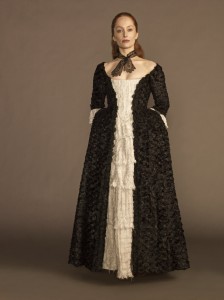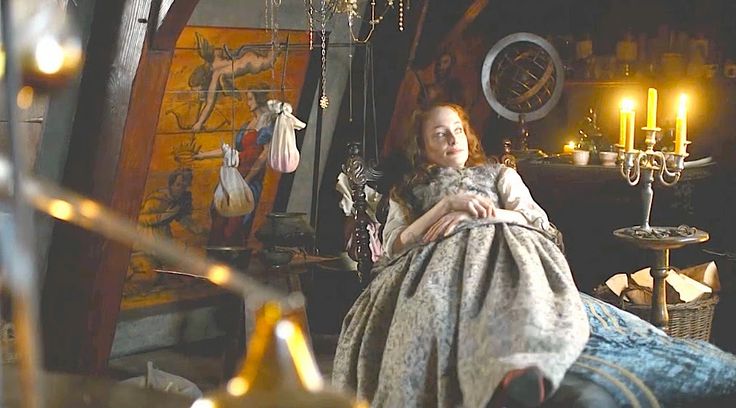This is my third post about the enigmatic Geillis Duncan in the Outlander series. It will be my last Outlander post for this year. This post will emphasize Geillis’ dark nature.
One of the biggest enigmas of Voyager is the fate of the twelve Scottish Boys that Geillis kidnapped. It is not clear what happened to them. However, one can assume they are dead.
“I hope he gets home,” I said, thinking of the gawky almost-fifteen-year-old I had seen that morning, adrift in an Edinburgh filled with prostitutes, excisemen, smugglers, and hatchet-wield-ing Fiends. “At least he isn’t a girl,” I added thinking of his last item. “The fiend doesn’t seem to have a taste for young boys.” (Gabaldon 393)
“Aye, well, there are plenty of others who have,” Jamie said sourly. (Gabaldon 393)
Claire and Jamie were wondering about Young Ian’s whereabouts in Edinburgh. Of course, Young Ian was following the steps of the man who eventually got burned, Mr. Tompkins. These musings establish a contrasting parallel between Geillis and the fiend, Reverend Campbell.
- Geillis has a preference for virgins. If she suffered from syphilis, how did she acquire it? This will be a total different topic that I will be writing about soon.
- The fiend prefers not so “innocent” girls.
- It foreshadows the association between them; it seems they have been acquaintances for a while and their main topic is the Fraser prophecy.
- They are both mad.

Geillis is basically a female version of Reverend Campbell. However, she is an extremely dark character who also shares certain characteristics with Black Jack. They both have a preference for young boys. Black Jack had a strong, sickly attraction for Jamie who was very young at the time of their first encounter (early 20s). He was abusive towards Fergus too; Black Jack even branded him when he was just 10 years old. The implication is that Geillis does share lots of similarities with the biggest villains of the series. This is not very perceptible to readers though. When it comes to Black Jack, the reader has a detailed account of the incidents based on the experiences of his victims. In the case of Reverend Campbell the reader is provided with a description of the dead bodies and the manner of death. This is not the case for Geillis. Basically her victims are gone without trace. There is no account of what exactly happened to them. The slaves are scared of her and keep quiet. As a result, Geillis is perceived as somebody more “gentle” than Black Jack or Reverend Campbell.
Associated with Reverend Campbell is also the man who aggressively approached Claire at the brothel. Jamie identified this man not to be an exciseman, and a copy of the New Testament was found with him. Mr. Willoughby probably knew that this man was associated with Reverend Campbell and that is why he killed him.
“This isna an exciseman,” Jamie said, still frowning. “I know all the Riding Officers in the district, and the Superintending Officers, too. But I’ve no seen this fellow before.” (Gabaldon 389).
It is interesting to follow the trajectory of this man after his death. What exactly happened to him? He ended in a cask.
I swallowed, thinking of the man who had accosted me on the stairs of the brothel. What had become of that cask of creme de menthe? (Gabaldon 742).
Geillis actually reveals the fate of this man. He travelled on the Persephone inside the cask, and the alcohol preserved him to a certain degree. He was such an attraction to the former Governor of Jamaica due to some fungi growing on him.
When Claire met Mr. Percival at Edinburgh, she noticed his two companions: a clergyman (Reverend Campbell) and Mr. Wallace. Obviously the unknown dead man is evidence that the Reverend and Mr. Percival were on a conspiracy to set a trap on Jamie. Of course, Revered Campbell was probably not aware of Jamie’s looks at that time.
The first post about Outlander in the New Year will be about Geillis’ association with the Duke of Sandringham. The second one will be about her suffering from a certain illness.
Excerpts from
Gabaldon, Diana. Voyager. New York: Bantam Dell. 1994. Print.
